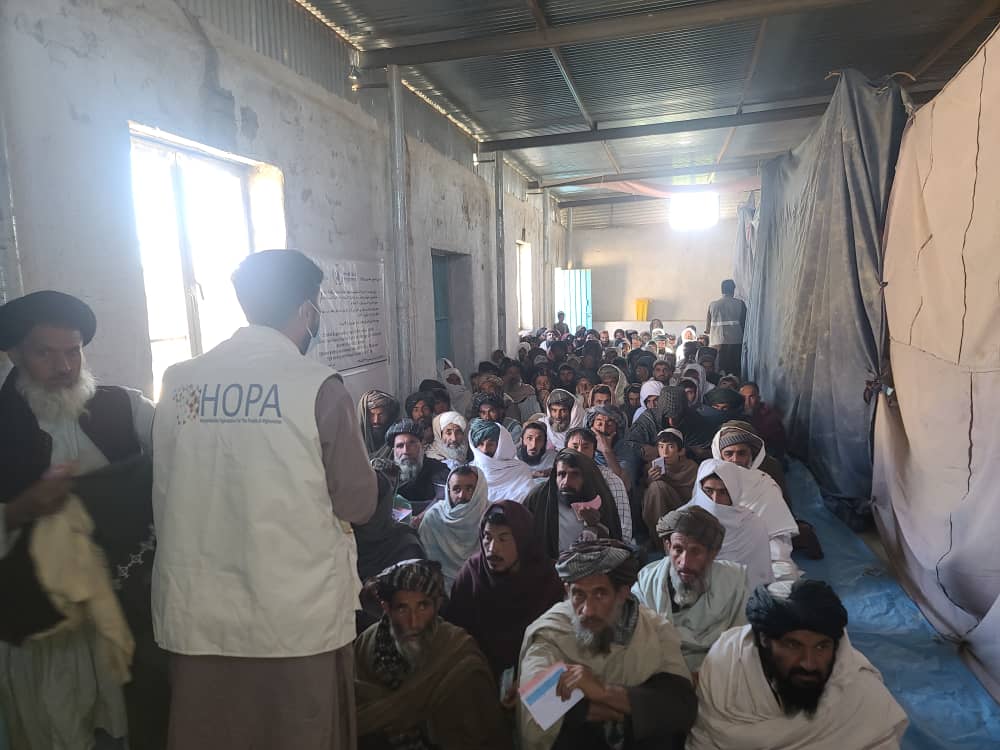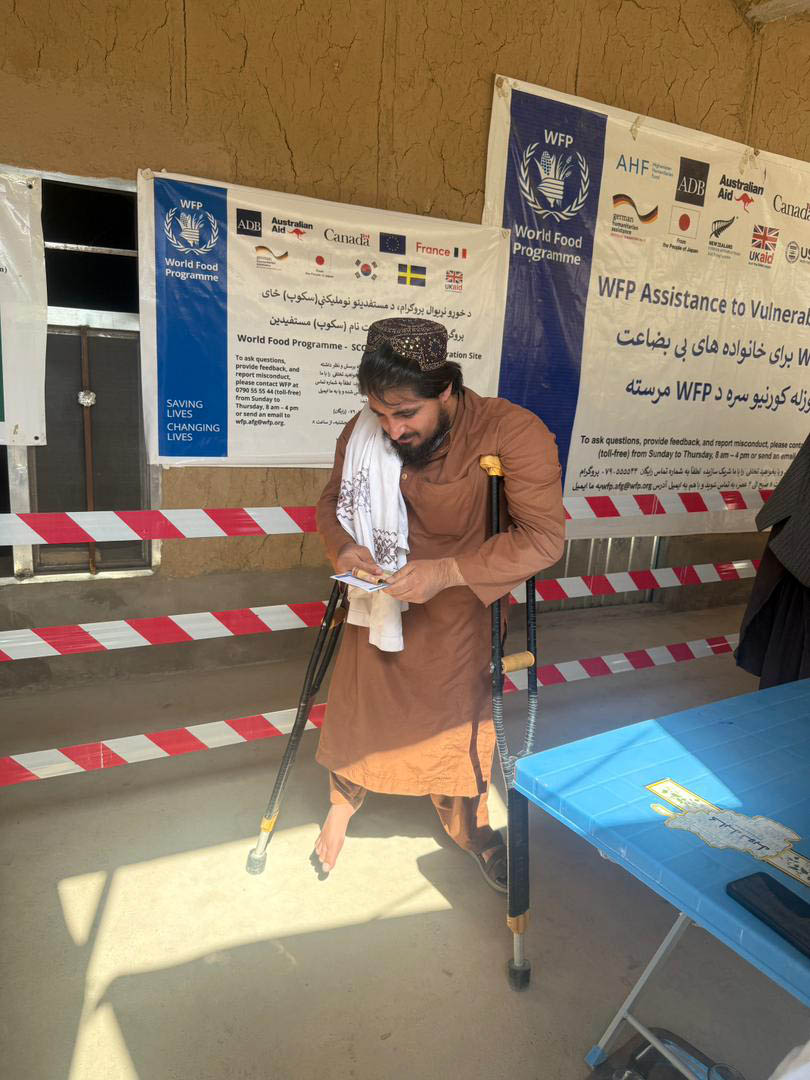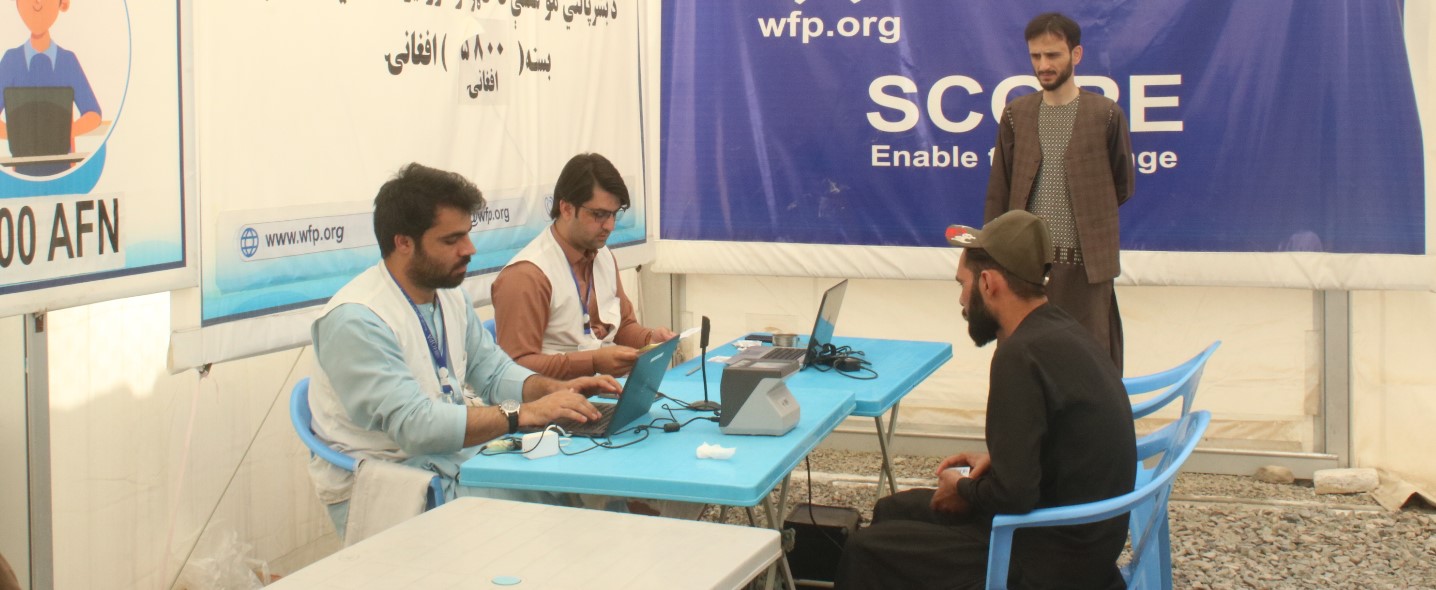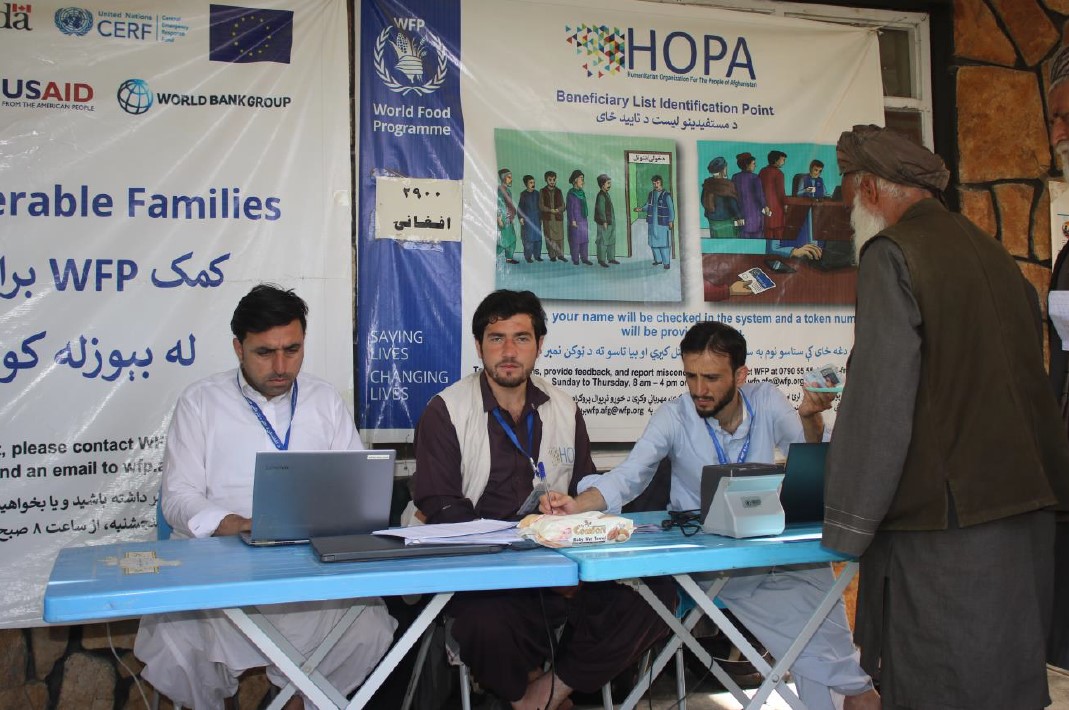
Food Distribution & Cash-Based Transfers (CBT)
1: Introduction
The Humanitarian Organization for the People of Afghanistan (HOPA), in partnership with the United Nations World Food Programme (WFP), successfully implemented the 5th cycle of food distribution in Panjwayi District, Kandahar Province, from March 19 to March 23,
2025. This initiative aimed to provide essential food assistance to vulnerable households in the district, ensuring improved food security and nutritional support for the most at-risk populations.
The distribution was conducted at Markazi Panjwayi Point, a designated distribution center strategically selected for accessibility and security. The food assistance was targeted towards households experiencing food insecurity, including female-headed families, elderly
individuals, persons with disabilities (PWDs), and other vulnerable groups. The distribution was carefully planned and executed in coordination with local authorities, community representatives, and WFP field teams to ensure a transparent, accountable, and effective
process.
Despite some operational challenges, including high caseloads, logistical delays, and verification issues with new beneficiaries, the distribution was completed successfully. The entire process adhered to WFP’s Accountability to Affected Populations (AAP) guidelines,
Protection from Sexual Exploitation and Abuse (PSEA) standards and data protection policies to safeguard beneficiary rights and dignity.

2: Distribution Overview
A total of 1,166 households received food assistance, with one absentee recorded. The assistance package included:
Wheat Flour: 50 kg per household
Peas/Pulses: 6.3 kg per household
Cooking Oil: 5 liters per household
Salt: 0.5 kg per household
Lipid-based Nutrient Supplement (LNS): 2.805 metric tons distributed
Wheat-Soy Blend (WSB): 2.130 metric tons distributed
The distribution took place over four days, ensuring a smooth and organized process. Below is The breakdown of daily distributions:
March 19, 2025: 450 households served
March 20, 2025: 509 households served
March 22, 2025: 178 households served
March 23, 2025: 29 households served
One household did not collect their entitlement due to unknown reasons, leading to a final total of 1,166 out of 1,167 households served.
3: Implementation and Key Considerations
3.1 Queue Management and Crowd Control
Given the large number of beneficiaries, effective queue management and crowd control were essential. The following measures were implemented to ensure a smooth and dignified distribution process:
Pre-scheduled time slots were assigned to beneficiaries to minimize overcrowding.
Separate queues were established for men, women, elderly individuals, and persons with disabilities to improve accessibility.
Security personnel and trained community volunteers managed the flow of beneficiaries and ensured order throughout the process.
On-site monitoring teams were deployed to prevent any irregularities or conflicts.
These strategies significantly reduced waiting times and ensured that all beneficiaries received
their food packages in an organized and respectful manner.
3.2 Accountability to Affected Populations (AAP)
AAP is a fundamental principle guiding humanitarian response efforts. Throughout the
distribution process, beneficiaries were fully informed of their entitlements, distribution
procedures, and available complaint mechanisms.
Public announcements were made before and during the distribution to provide clear guidance.
Information banners were displayed at the distribution site in Pashto and Dari to enhance transparency.
Complaint and feedback mechanisms were set up, including suggestion boxes and a dedicated helpline, to allow beneficiaries to report any concerns or grievances.
The feedback system helped address minor issues, such as queries about entitlements and concerns about queue arrangements.
3.3 Protection from Sexual Exploitation and Abuse (PSEA)
HOPA ensured that the distribution process was conducted in full compliance with PSEA standards to protect the dignity and safety of beneficiaries.
All staff and volunteers received PSEA training to reinforce ethical conduct.
Female staff members were present to assist female beneficiaries and ensure a safe environment.
Strict monitoring mechanisms were in place to prevent any form of exploitation or misconduct.
Confidential reporting channels were made available for beneficiaries to report any inappropriate behavior.
No PSEA-related incidents were reported during this cycle, indicating a safe and ethical distribution process.
3.4 Measures for Women and Persons with Disabilities
Recognizing the unique challenges faced by female-headed households and persons with disabilities (PWDs), HOPA implemented additional measures to ensure their inclusion:
Dedicated distribution lines for women and PWDs to prevent harassment and ensure dignity.
On-site assistance for elderly beneficiaries and PWDs, including the provision of porters to help carry food packages.
Coordination with community elders and women’s groups to ensure that female beneficiaries felt safe and empowered to collect their assistance.
These measures significantly improved access for vulnerable groups, making the distribution process more inclusive and efficient.
3.5 Data Protection and Beneficiary Privacy
HOPA strictly adhered to WFP’s data protection policies to safeguard beneficiary information:
Personal data was kept confidential and only accessed by authorized personnel.
Digital records were securely maintained to prevent data breaches.
Beneficiary verification was conducted in a manner that respected privacy, ensuring that no personal information was shared publicly.
By maintaining high data protection standards, HOPA ensured the trust and safety of beneficiaries.
4: Challenges Encountered
Despite the overall success of the distribution, several challenges were observed:
One absentee household: The reason for non-collection is unknown, and follow-up will be conducted in the next cycle.
High caseloads leading to long waiting times: Although the queue management system was effective, additional staff from Gulzar Group could further expedite the process.
Verification delays for newly registered beneficiaries: Some new beneficiaries were not immediately reflected in the system, requiring manual verification before receiving assistance.
Minor transportation delays: Road conditions slightly impacted the timely arrival of food supplies, though the issue was resolved without major disruptions.
5: Recommendations and Lessons Learned
To further enhance future distributions, the following recommendations are proposed:
1. Increase staffing levels by assigning additional personnel from Gulzar Group to improve efficiency and reduce waiting times.
2. Explore the possibility of a second distribution site in Panjwayi to reduce congestion and enhance accessibility.
3. Enhance digital beneficiary management to eliminate verification delays and improve record accuracy.
4. Strengthen transportation coordination with logistics partners to minimize delivery disruptions.
5. Expand community engagement efforts to increase beneficiary awareness and enhance trust in the distribution process.
6: Conclusion
The March 2025 food distribution in Panjwayi District was successfully completed, benefiting 1,166 households and improving food security in the region. Through effective queue management, accountability measures, and protection mechanisms, the distribution process
was conducted transparently, efficiently, and ethically.
While minor challenges were encountered, these were effectively managed, and key lessons were learned for future improvements. HOPA remains committed to delivering humanitarian assistance with professionalism, integrity, and respect for the dignity of all beneficiaries.


